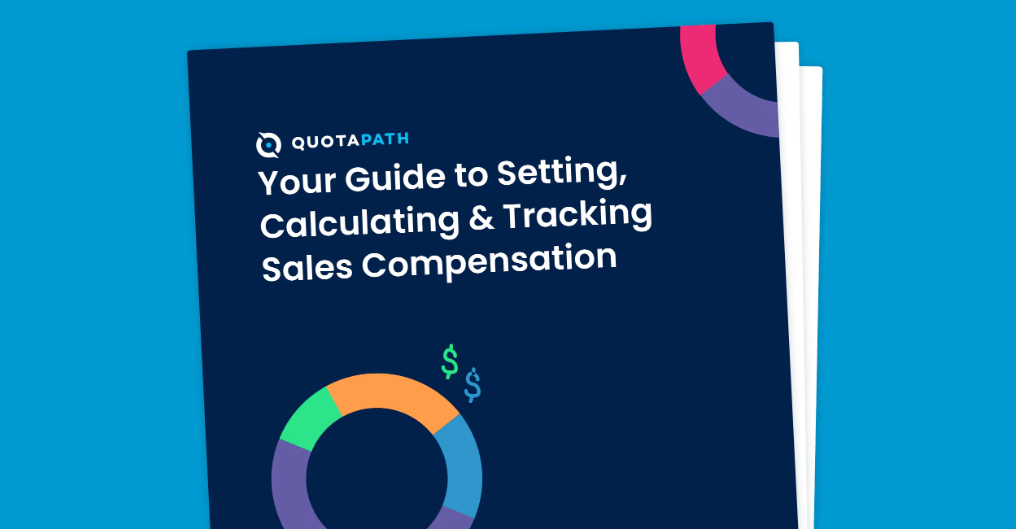Businesses expand internationally for many reasons. For instance, entering an unchartered market can offer new revenue opportunities, provide access to a broader talent pool, and allow product global brand exposure.
But with those lucrative opportunities come many challenges.
Specifically — the challenge of the unknown.
When companies expand internationally, they typically lack visibility into the buyers’ behavior, purchase power, and brand recognition. Strategies that work well for one company, or in one territory, won’t necessarily work for another.
As such, leaders need to proceed with caution.

Compensation Hub
Discover, compare, and build compensation plans. Customize compensation models using 9 variables.
Find Compensation PlansHow new territories impact sales teams
Sales territory planning can be tricky, but it’s especially challenging to get new territories right with so many unknowns. The more you know, the easier it is to create territories that deliver results and support your sales reps.
Constant territory changes can frustrate and demotivate sales reps, which reduces your sales team’s productivity. And, territories with vastly different opportunities and income potential result in uneven compensation distribution across your sales team. This can cause reps to leave for more equitable opportunities elsewhere.
Best practices for territory planning
Now for the good stuff. Although entering a new territory poses its challenges, best practices exist to help.
Align territories so they are fair and equitable
Strive to give reps in the same role books of business that are equal in size and quality, so everyone has the same potential to achieve their goals and drive revenue, regardless of tenure.
Distribute opportunities evenly across the team
Use a round-robin distribution of new opportunities from the beginning so all team members have the same chance to succeed. Plus, as new reps join the organization, they’ll have the same growth experiences. This approach is scalable and prevents favoritism. Scalability facilitates fiscal planning, preventing over or under-hiring for new markets.
Give SDRs their own accounts
Don’t leave yourself with a pipeline shortfall due to SDR/AE pods. Give SDRs their own accounts that they’re fully responsible for. These should be accounts with the greatest probability of converting to opportunities. This gives SDRs a better chance to deeply understand their accounts and do everything possible to convert these ideal customer profiles (ICP) accounts.
If they aren’t successful in penetrating the account, they can put it back into nurture, and give someone else the opportunity to work it. And, if the SDR learns that the timing isn’t right due to a contract obligation ending on a certain date, the rep gets credit for obtaining that information and adding it to the CRM.
Plus, in this system, AEs have their own accounts they can self-source as well.
Leverage your ICP as you expand
Create your ideal customer profile (ICP) based on the characteristics of accounts that have historically signed the largest deals with your company. Look at things like employee count, user headcount, industry, and any software the business uses that interfaces with yours (if applicable). Create a list of prospective customers that match your ICP and evenly distribute them to your sales team.
When expanding, experiment with a variation of your ICP, and change only one characteristic — perhaps geographic location. Create a list of these and evenly distribute them to your team. This minimizes the risk carried by any one rep while you’re testing new ICPs. Then, expand on that ICP once you’ve proven it’s valid for your product.
Account scoring is multidimensional
Score accounts in various ways when assessing them for fit. Some ways to approach this include:
- Fit against your ICP
- Potential for future value or growth
- Timing as to whether the account is ready to consider what you’re selling, for both new prospects and existing accounts to measure upsell potential
- Customer health–consider things like if the account has found value in your product, are users logging into your solution frequently, how many users are logging in, is the account growing or scaling and is the account economically healthy
Remember to check with your SDR team to make sure they’re receiving good quality leads based on the prospect scoring. Adjust scoring as needed so you don’t waste reps’ time on bad leads.

Your Guide to Setting, Calculating and Tracking Sales Compensation
Design and execute a compensation strategy that rewards and motivates your reps, aligns to business goals, and drives revenue.
Download the free ebook3. Commission structure is different
In new market territories, you don’t have a basis to set quotas or any way to know what quota attainment will be, so it’s best to eliminate decelerators and accelerators when creating your commission plan.
One element that is good to add in new territories is new logo bonuses. Getting a few early customers is crucial, so reward your reps for closing them. Consider offering an extra $1,000 for the first five new customers.
4. Do your research
Graham suggests that one way to overcome the OTE/pay mix difference between countries is to connect with people at companies in the region where you’re planning to expand and ask them.
5. Look at historical data to set initial quotas
Setting quotas for the first time in new territories can be tricky. One place to start is to look back at the early days of your company when you first launched. Look at the historical information from when you lacked marketing resources.
You can also model it like a new hire ramp period since you don’t just open a new market entirely cold. You likely have some customers in the region already and then start to build on your current customer base from there.
6. Consider offering a non-recoverable draw initially
Start with a comp plan with a guarantee of at least 70% of your variable. This is a lot like a non recoverable draw. For example, if your variable is $5K per month and reps get paid 10% on everything they sell, then they are guaranteed at least $3K per month for the first six months, like a non recoverable draw.
7. Start simple and adjust over time
Make your comp plan simple initially. A couple of comp plan structures to use for a new territory include Single Rate and Single-rate bonus.

Understand that the first comp plan for a new territory is not perfect. You must be willing to change it. Handle this by telling people as you hire them, so they are prepared. Your plan should evolve as you get more data after 6 to 12 months. This will help you create a comp plan aligned with your business metrics and goals.
Bonus tips
Graham had a couple of non-comp related bonus tips:
- Have a specific reason to be in the new territory.
- Hire someone from a competitor — get an early employee who worked at a competitor in the new territory for a huge advantage as you expand.
It’s time to get started on your comp plan for a new territory
There are risks associated with expanding into new sales territories, but knowledge is power.
So, do your research and select the territory that’s the best match for your business. Design your new territories using the best practices listed above. Then consider Graham’s tips as you build a comp plan for a new territory.
To get started on your compensation structure, visit QuotaPath’s new free resource, Compensation Hub



